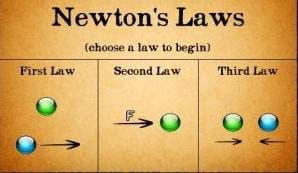
Summary
Move it! This unit explores Newton’s Laws of Motion. Students have fun exploring the concepts of forces and changes in motion, action and reaction, angular momentum, and pendulums. A variety of hands-on investigations and related activities help learners make sense of motion.Engineering Connection
Whether designing objects that move or stay put, understanding Newton's Laws of Motion helps engineers of all disciplines quantify the "invisible" forces acting on all objects. For example, engineers take advantage of their understanding of rotational inertia and angular momentum to maximize the thrilling spin experience on amusement park rides. Besides being used in clocks, engineers use pendulums in equipment to detect earthquakes, design buildings to resist shaking due to earthquakes, and help robots balance.
Subscribe
Get the inside scoop on all things TeachEngineering such as new site features, curriculum updates, video releases, and more by signing up for our newsletter!Unit Schedule
Suggested activity order:
More Curriculum Like This

Students learn what a pendulum is and how it works in the context of amusement park rides. While exploring the physics of pendulums, they are also introduced to Newton's first law of motion — about continuous motion and inertia.

Students learn the concept of angular momentum and its correlation to mass, velocity and radius. In an associated literacy activity, students use basic methods of comparative mythology to consider why spinning and weaving are common motifs in creation myths and folktales.

High school students learn how engineers mathematically design roller coaster paths using the approach that a curved path can be approximated by a sequence of many short inclines. They apply basic calculus and the work-energy theorem for non-conservative forces to quantify the friction along a curve...

Students explore how pendulums work and why they are useful in everyday applications. In a hands-on activity, they experiment with string length, pendulum weight and angle of release.
Copyright
© 2020 by Regents of the University of ColoradoLast modified: December 10, 2020







User Comments & Tips